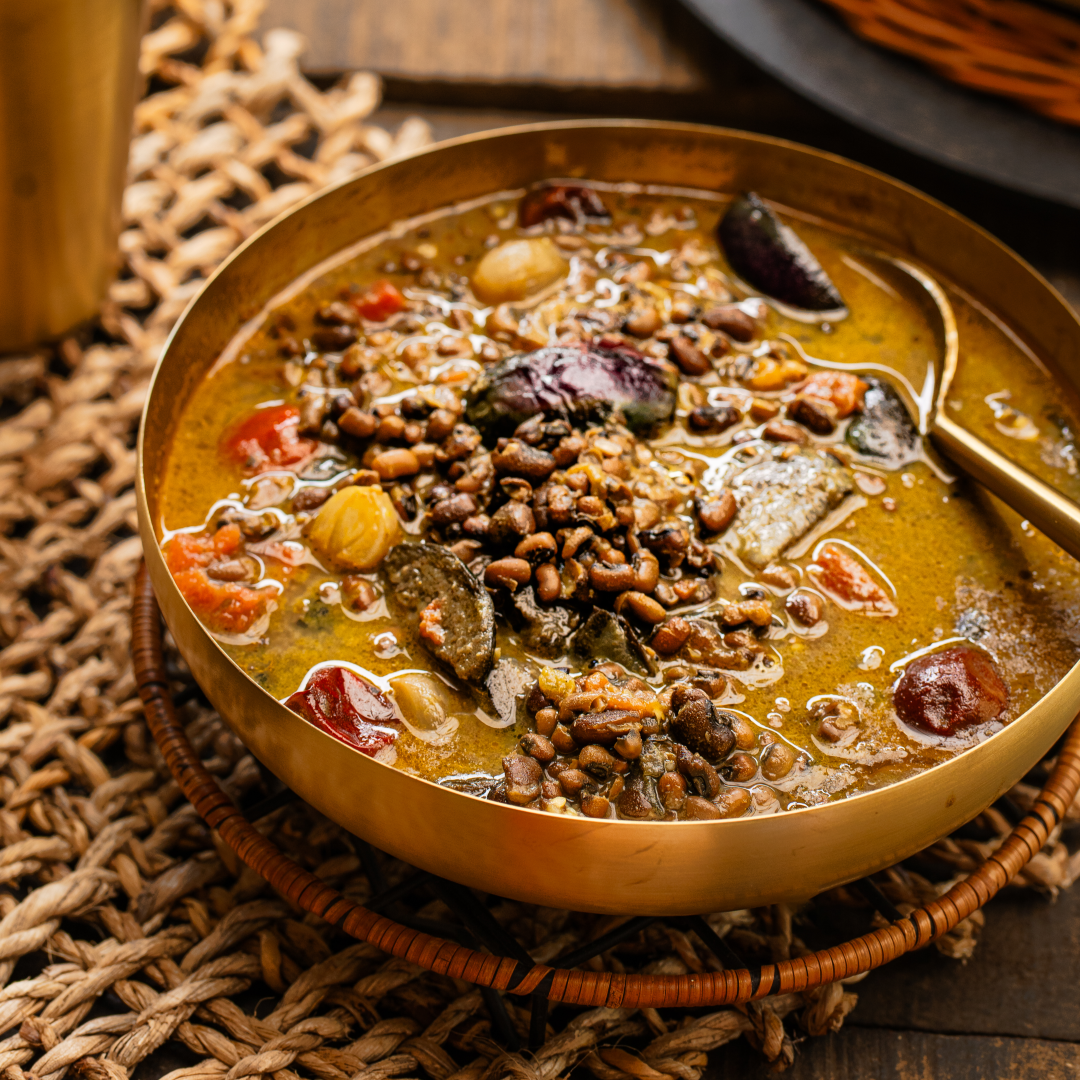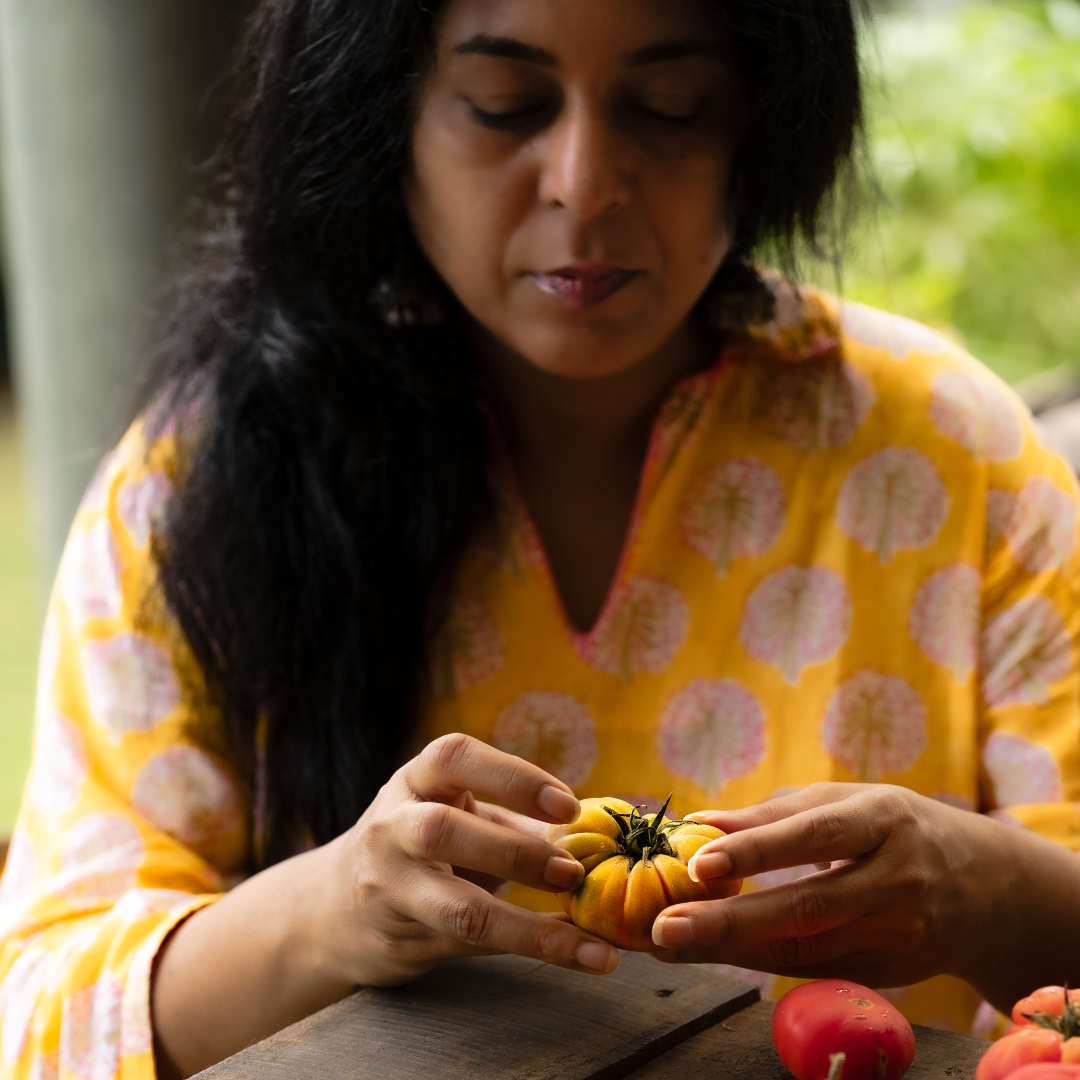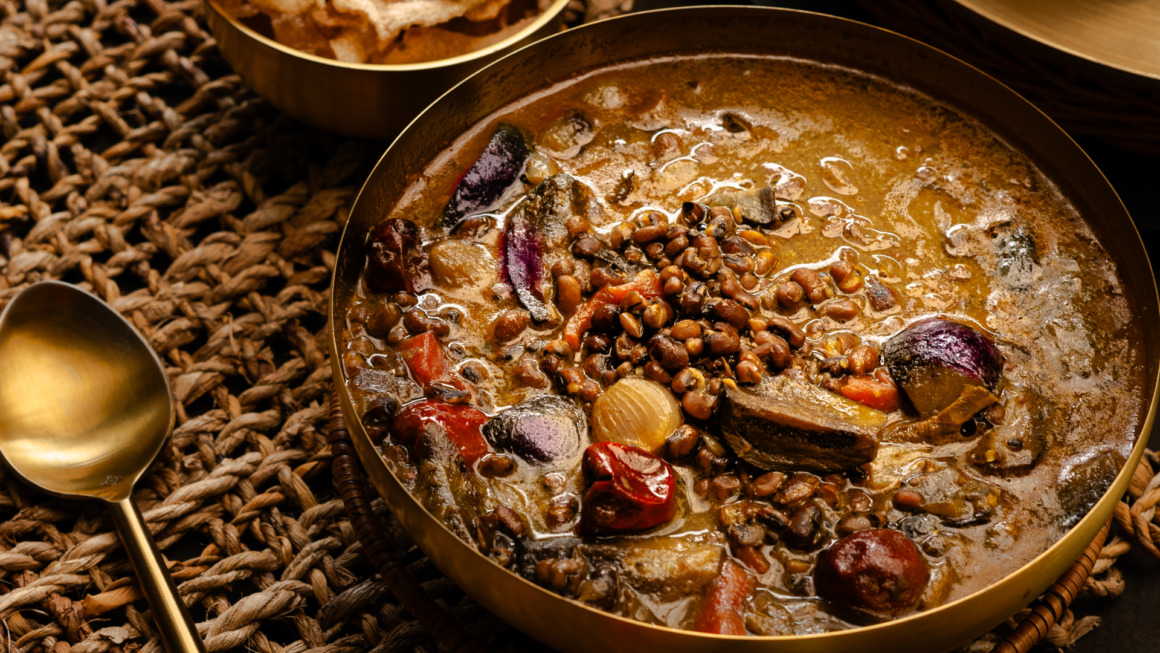This dish holds a special place in my heart, taking me back to childhood lunches at the family dining table. Both my brothers – older and younger would dive into a hot, hearty meal, all while I navigated the amusing ups and downs of life as the middle child. Thatta Payir Kathrikai Kuzhambu was a regular feature during those times.
Though I’ve learned it’s a staple in many homes across Coimbatore and the Kongunadu region, I never encountered it outside of our home while growing up. Years later, I discovered that each household has its own unique version of this kuzhambu. It’s one of those unassuming native dishes you don’t fully appreciate in your youth, only for it to become a source of nostalgia and comfort as you age.

Interestingly, many from the Kammavar Naidu community have shared similar stories of how this dish, with its buttery-soft brinjals and the satisfying bite of whole pulses, is a perennial favourite. It’s recipes like these that hold a wealth of nutritional wisdom-testament to the foresight of our ancestors in creating wholesome, balanced meals.
I hope you give this recipe a try.
Thattapayir Kathrikai Kuzhambu
Ingredients
- Thattapayir (red lobia/red cow peas) – 1 cup, soaked for an hour and pressure-cooked until soft
- Small onions: 10
- Dried red chillies: 5-6, whole
- Mustard seeds: ¼ tsp
- Curry leaves: a few
- White urad dal: ½ tsp
- Coconut milk: ½ cup
- Tamarind: 1 small lemon-sized piece, soaked in warm water
- Coriander powder: 1 tsp
- Cumin (jeera) powder: ½ tsp
- Red chilli powder: 1 tsp or to taste
- Turmeric powder: ½ tsp
- Salt: to taste
- Cold-pressed sesame oil: 2 tbsp
- Water: 2-3 cups
- Tender brinjals: 6-8, stalks removed, quartered, and soaked in water
- Crushed black pepper:¼ tsp
Method:
- Heat the sesame oil in a deep pan.
- Add the mustard seeds and let them pop. Then add the urad dal, curry leaves, and dried red chillies. Sauté for a few seconds.
- Add the small onions and cook until they become soft and golden.
- Drain the brinjals and add them to the pan. Sauté until they turn golden and soften.
- Add the coriander powder, cumin powder, red chilli powder, and salt. Mix well.
- Pour in ½ cup of water. Add turmeric powder and crushed black pepper.
- Stir in the cooked pulses. Add 1½ cups of water.
- Extract the tamarind pulp and add the tamarind water to the pan.
- Simmer on a low flame for 8-10 minutes, allowing the sourness of the tamarind to mellow and the flavours to blend. Add more water if needed.
- Once the flavours are well combined, add the coconut milk. Let it cook for another 6-8 minutes until the gravy thickens to your desired consistency.
- Taste for seasoning and adjust if necessary.
- Serve warm with hot Ponni rice and vadagam or chapati.
PS: Vadagam :- Sun-dried crisps made from millets or rice, stored in large containers and fried as needed. Also known as vadaams in Tamil Nadu.
Watch this recipe here – Thattapayir Kathrikai Kuzhambu

Shanthini Rajkumar, hailing from Coimbatore in Tamil Nadu’s Kongunadu region, belongs to the Telugu Naidu community whose ancestors migrated from Andhra Pradesh. Surrounded by ancestral farmlands and traditional customs in her formative years, she developed a deep passion for culture, sustainable living, and indigenous food practices.
A seasoned content creator, Shanthini has been blogging for over a decade through her website, Pink Lemon Tree, which features recipes and cultural insights. An advocate for organic farming, she actively supports farmer-led businesses across India. She remains dedicated to deepening her understanding of Coimbatore’s rich heritage and traditions.
Translations and detailed descriptions are provided to give a better understanding of the story to people from different cultural backgrounds across the globe.

